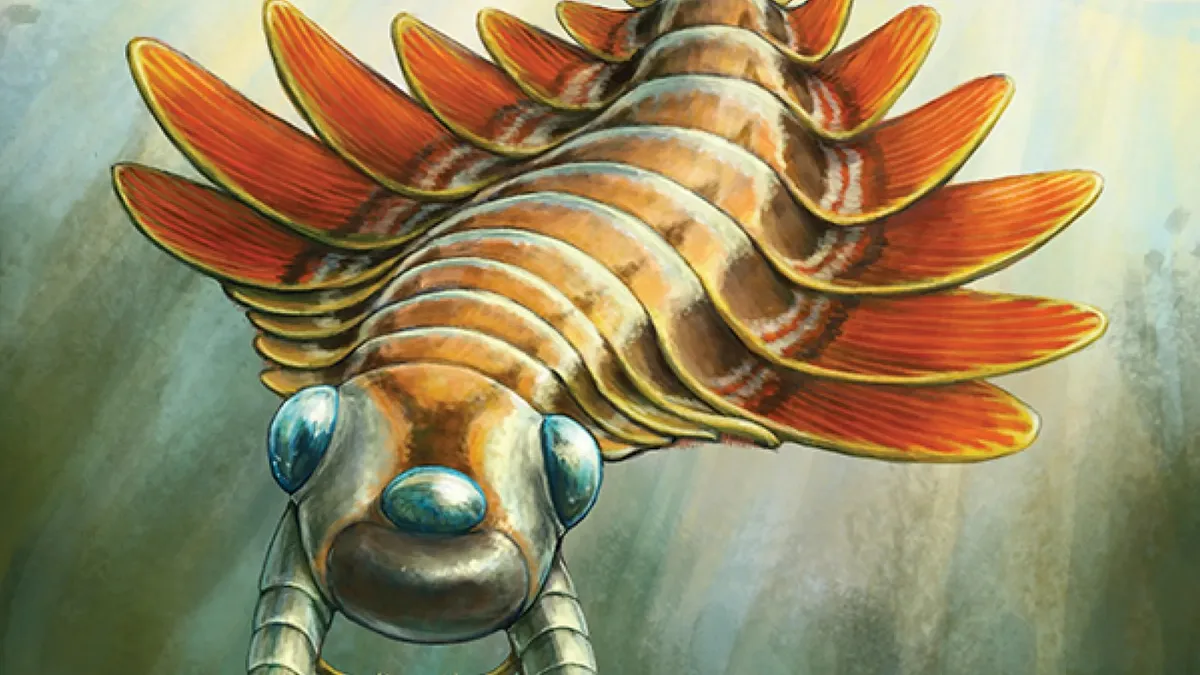
Paleontologists have made an astonishing discovery of a three-eyed creature known as Mosura fentoni, affectionately dubbed the sea moth. This remarkable fossil, unearthed in the Burgess Shale of the Canadian Rockies, dates back more than 500 million years and offers unprecedented insights into the animal life during the Cambrian period. The findings were published in a recent study in the journal Royal Society Open Science, highlighting the complexity of early marine life.
The fossilized remains of the sea moth reveal a creature approximately the length of an index finger, adorned with three eyes on its head and a circular mouth reminiscent of a pencil sharpener, lined with sharp teeth. Researchers from the Manitoba Museum and the Royal Ontario Museum have described the creature as a formidable predator of its time. Notably, the Mosura was equipped with flaps on both sides of its body for swimming, and it possessed intimidating claws that extended from its head.
Lead study author Joe Moysiuk, curator of paleontology and geology at the Manitoba Museum, noted, "It gives it almost a bit of an Edward Scissorhands look." These jointed claws featured long spines, enhancing its predatory capabilities. The sea moth's unique adaptations are indicative of its ecological role in the Cambrian seas.
The discovery of Mosura fentoni has revealed that this creature was far more complex than previously understood radiodonts. Unlike other radiodonts, which typically exhibit a simple abdomen-like structure, this species featured a body comprised of 16 segments lined with gills, closely resembling modern arthropods. Moysiuk remarked on the significance of this multi-segmented structure, stating, "It's something that we haven't seen in any of its close relatives before." This demonstrates that early arthropods were capable of evolving and specializing different body regions for various functions.
The well-preserved fossil of Mosura also showcased its open circulatory system, which included a heart that pumped blood into large body cavities known as lacunae. Paleontologists believe that the sea moth utilized its body flaps for swimming, similar to the movements of modern-day stingrays. During its time, Mosura shared the waters with other early apex predators, including the iconic Anomalocaris canadensis.
Stewart Edie, a paleobiologist at the Smithsonian Museum of Natural History, emphasized the importance of the Mosura discovery in understanding the diversity of life on Earth before the Cambrian explosion. This evolutionary event is renowned for establishing the foundational body plans of major animal groups known today. Edie stated, "Less clear has been how quickly or extensively evolution was proceeding within them." The revelation that a group of arthropods previously thought to have a mundane evolutionary history was actively participating in this evolutionary surge adds a new layer of complexity to our understanding of early life.
The discovery of Mosura fentoni not only enriches our knowledge of the Cambrian period but also emphasizes the intricate evolutionary pathways that have shaped the diversity of life on our planet. This remarkable sea moth serves as a testament to the complexity and dynamism of early marine ecosystems.